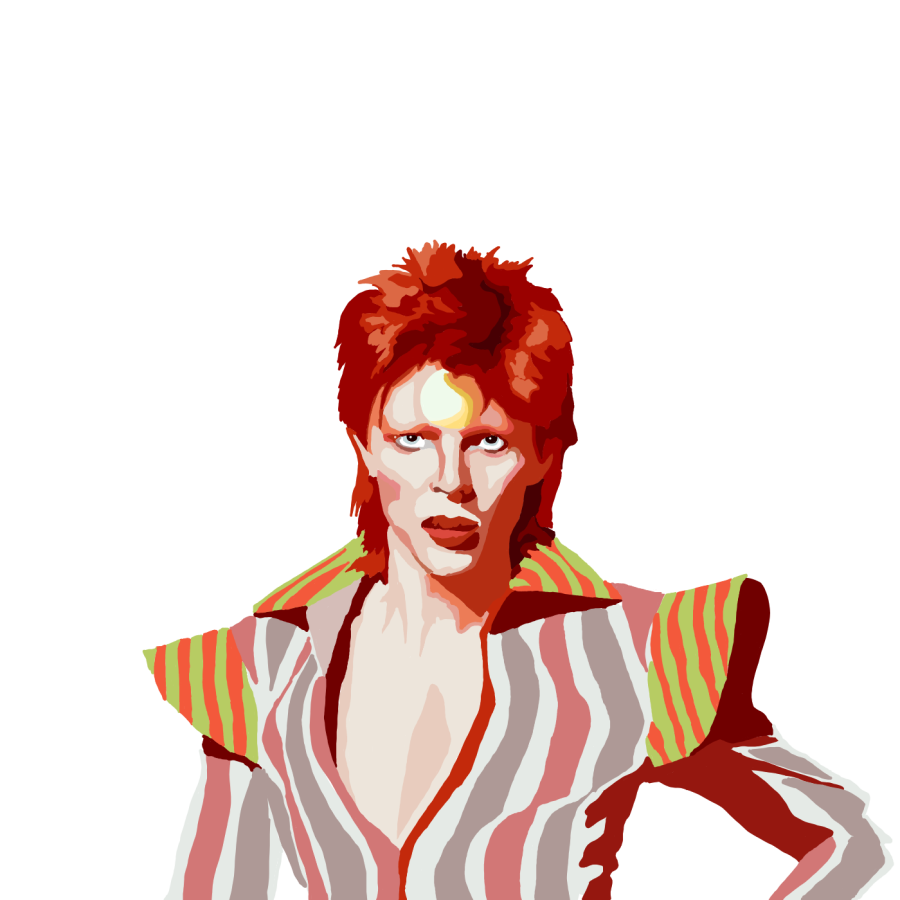‘Moonage Daydream’ puts Major Tom on the big screen
September 22, 2022
“Moonage Daydream” is a visually-striking cinematic trip through David Bowie’s creative, musical and spiritual journey. Filmmaker, Brett Morgen, eloquently encapsulates the mystery and multitudes of the glam rock sensation by showcasing a colorful collage of video footage, live performances, talk show interviews and more.
Unlike most music-related documentaries and biopics, “Moonage Daydream” lacks any narration and talking heads. The entire film is an electrifying montage of archives from Bowie’s life and 54-year-long career. Rather than following a chronological timeline, Morgen created chaos through cinema.
“Moonage Daydream” immerses the audience into an erratic time warp of Bowie’s life and artistic legacy. The film begins with an ominous opening of the song, “Hallo Spaceboy,” then morphs into the “Ziggy Stardust and the Spiders from Mars” tour. From there, a glimpse of Bowie’s melancholy childhood appears. Following his musical experimentation, it moves along to his marriage with Iman and then ends with his death in 2016. The end of the movie is a recording of Bowie revealing his personal philosophies and spiritual views while experiencing his own journey.
Morgen does an excellent job by shining a light on all of Bowie’s artistic elements. His paintings, sculptures, acting roles and dancing were all showcased with extensive visual exuberance. Scenes from movies like “Labyrinth,” “The Man Who Fell to Earth,” and “Merry Christmas Mr. Lawrence” were featured throughout the film.
Migrating from one scene to the next, Morgan used a vibrant splatter of colors and psychedelic images that morphed into footage of the rock and roll chameleon doing what he did best: shapeshifting into whatever version of himself he wanted to be.
Bowie’s resistance to society’s standards inspired generations to express themselves authentically with fashion, art and sexuality. Before there was Harry Styles, Bowie was one of the first male musicians to appear on stage flaunting a sparkly dress and a red feathered boa. He once showed up to a public appearance wearing alien space gear just to prove that he wanted the audience to question whether he was from this planet. The Thin White Duke made history for being one of the first openly bisexual celebrities. Morgen emphasizes Bowie’s iconic androgynous fashion and ways of life by including an interview, where the musician stated that he didn’t care if people think he looked like a specific binary gender. He wore clothes that he identified with and fit his day-to-day persona.
Morgen’s use of archival footage and recordings of Bowie talking about his personal views and creative experiments allow viewers to perceive Bowie exactly how he intended them to. “When I was sixteen, I decided that I wanted to live a very full life and experience as much life as I possibly can,” Bowie stated.
In his 69 years of life, Bowie wrote and produced a discography of 26 albums, appeared in over 30 movies, traveled the world, studied Buddhism, mastered miming, got married twice, had two children, created various mediums of art and inspired recent generations to evolve into their most authentic selves.
“Moonage Daydream” is a music documentary like no other. Viewers will be shot out of a rocket and launched into a vibrant visual experience about the gender-defying, creative, always fashionable, Capricorn icon, spoken in his own words. Morgen collected decades worth of archives to produce an artistic montage of Bowie. If being taken on a glam rock trip filled with colorful visuals and music is appealing, “Moonage Daydream” is the documentary to see.












